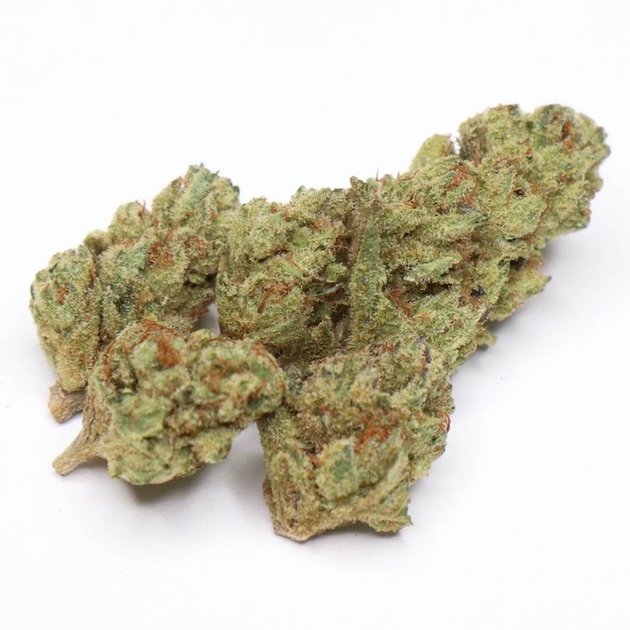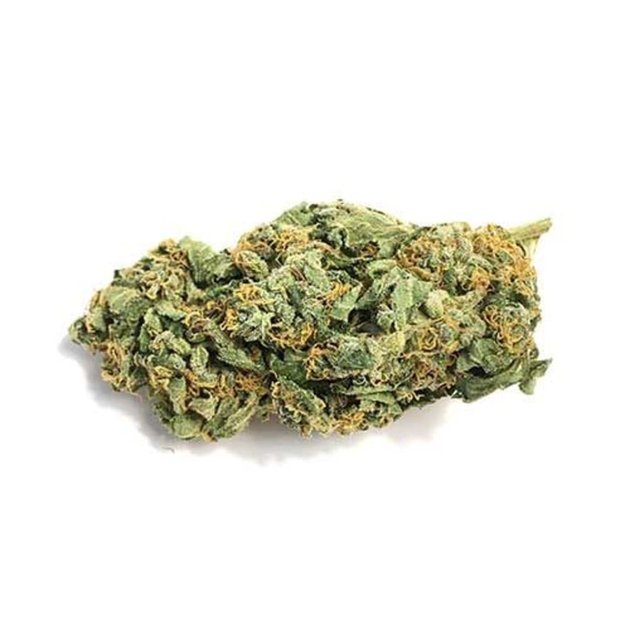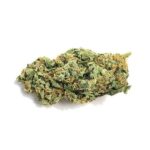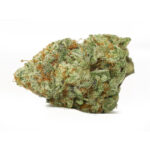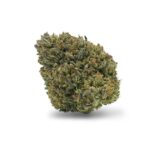- Article summary
- What is medicinal cannabis?
- Good manufacturing practises
- Good Manufacturing Process (GMP)
- Uses of Medical Cannabis
- Available cannabis drugs for purchase
- Side effects of medical cannabis
- Is medical cannabis legal?
- Final Word
- FAQ’s
Summary
The laws surrounding cannabis and medical cannabis are frequently changing and updating. This can make the world of cannabis seem confusing! It’s important that you keep yourself updated on these laws, or you could find yourself in trouble with the law. For example, in Portugal medical cannabis (including cannabis) is completely legal. However, in Croatia only medical cannabis is legal. Medical cannabis could help in the treatment of epilepsy, MS, pain, and more, although further research is needed.

Introduction
Cannabis has demonstrated its wide-ranging applications in many different areas. This includes textiles, recreation, health and beauty, as well as healthcare industry. Therefore, the world has seen a huge rise in the cultivation of cannabis, with the global market expected to be worth over USD$ 57Bn by 2026. On the world stage, it’s fair to say that Europe is set to become the world’s largest cannabis market, with over 15 countries legalising the use of medicinal cannabis. However, it is important to bear in mind that the legality varies greatly between countries. Consider this article to be your guide to medicinal cannabis in Europe, as we address the potential benefits, legality, and more.
What is medicinal cannabis?
So, what is medicinal cannabis? Put simply, it is a plant-based medicine derived from the Cannabis plant. It is typically prescribed by a specialist or medical professional, whereby it is used for pain relief, treating symptoms of depression, reducing acne, and much more.
Medical cannabis contains molecules known as cannabinoids, which can interact with our body to treat illnesses. With over 113 different types of cannabinoids, tetrahydrocannabinol (THC) and cannabidiol (CBD) are the most well-known (and well-researched) ones. It is also worth noting that CBD products are not regulated or sold as a medicinal product, however medical cannabis would typically contain high levels of CBD.
Pharmaceutical cannabis is a subset of medical cannabis. It pertains to the designing analogues of cannabinoids with improved pharmacokinetic and pharmacodynamic profiles to treat disease symptoms. So, what do we mean by analogues? Put simply, analogues are the various forms of a molecule. These are produced by the introduction of new functional groups to its structure in order to help a drug enter our body. This modification can thereby help to lower the drug dosage through improving its potency and reducing the presence of toxic metabolites.

Did you know that there are three different cannabis species? Gold star if you did! But only the C. indica and C. sativa strains are utilised for medicinal reasons. Using those species, the plant extracts can be consumed in an array of methods such as sprays, smoking, edibles, and capsules. Also, it is essential to note the difference between recreational and medicinal, as the recreational use of cannabis is illegal in the majority of European countries. Cannabis with high levels of THC that is, as it is linked to the feeling of being “high” and altering your state of mind. In contrast, medical cannabis contains high levels of CBD and low levels of THC, in which consuming CBD does not make you “high”, as opposed to THC.
Good manufacturing practises
All medical cannabis-based products must adhere to strict control testing known as the Good Manufacturing Process (GMP), with their market retail also being strictly regulated. The presence of such regulations ensures controlled testing of the active pharmaceutical ingredient (API) which is to be consumed by a patient, and they also help in the prevention of substance abuse. The API is a term used to define an extractive component of the cannabis plant or a specific part of the plant. On the other hand, recreational cannabis does not undergo such stringent control measures and so may present some notable risks to a consumer’s health.
Good Manufacturing Process (GMP)
GMP is a series of compliance and control measures that are put in place to ensure all API are of consistent quality and high in purity. These control measures involve employing testing facilities to measure cannabinoid levels and detect traces of contaminants such as heavy metals and potency testing, and ensuring that all technicians are certified as qualified for work. In addition, GMP ensures that testing facilities are equipped with the state-of-the-art equipment that will permit the safest and most environmentally friendly testing procedure.
Uses of Medical Cannabis
So, what can medical cannabis be used to help treat? In this section we will examine the main areas of research into medical cannabis for specific health issues. The good news is that medicinal cannabis opens doors to treating illnesses and diseases. Although it has yet to be fully explored, medicinal cannabis is known to help alleviate the symptoms of appetite loss, Alzheimer’s disease, cancer, mental health conditions, multiple sclerosis, and pain. The combination (and in their own right) of THC and CBD are used for medicinal purposes because of their different activities with the endocannabinoid system (ECS) and the receptors in which they target.
Our ECS is vital to maintain the health of our body, and cannabinoid receptors are widespread in our body thanks to the ECS. They are involved in the vital functions of regulating cognition, pain sensation, memory, and even sleep. The key receptors involved are called CB1 and CB2 receptors, which are located in the brain and spinal cord, respectively. THC is an agonist of the CB1 receptor (i.e. THC increases its activity), while CBD is an antagonist of the CB1 (i.e CBD decreases its activity).
Cancer

Cancer is described to be cells possessing six “hallmarks”, which involves having uncontrolled cell proliferation, skipping signalling pathways, and possessing metastatic capabilities. It is one of the most complex diseases due to its genetic and epigenetic changes. Thus, for this reason, there is no single appropriate treatment. There are over 200 different types of cancer, and every kind of treatment leads to some kind of side effect. For example, cisplatin is a drug used for testicular cancer, but it can cause serious side effects such as kidney loss.
Preclinical studies have indicated that cannabinoids can control cell proliferation and stimulate apoptosis (meaning cell death). It has been shown that the absence of the CB1 and CB2 receptor leads to a decreased cancer formation as agonists (such as THC) stimulate apoptosis. However, these studies are still in their preclinical trials, and more information is needed before the scientist can elucidate its mode of action.
On the other hand, scientists have extensively examined the effect of cannabinoids in upregulating the immune cells, specifically T cells, and their inhibition of angiogenesis (i.e. blood vessel formation around cancer cells). T cell proliferation is affected by cytokines (which are proteins that stimulate a humoral and clonal response), and increased levels of cytokines can help activate the immune system to destroy cancerous tissue. Moreover, as cannabinoids downregulate vascular endothelial growth, they can help lower the rapid growth of cancer and the risk of secondary tumours.
In the USA, there are already two cannabinoid drugs, namely Nabilone and Dronabinol, which are used to treat the symptoms of cancer found amongst chemotherapy patients.
Multiple Sclerosis (MS)
MS is a neuroinflammatory disease which can lead to mood changes, muscle spasms and pain. Neurons in your brain contain an axon (which are strong fibres in which electrical impulses travel along) that is coated by an insulating layer of myelin. Over time, some axons can become demyelinated and/or experience inflammation. If they are not repaired, these axons will eventually degrade. Hence, patients who suffer from MS will experience an imbalance between their anti-inflammatory response and immune response, which will damage neurons. In MS, the immune cells become over-activated and start to destroy all neurons. This results in a cascade of proinflammatory cells, bringing damage to the blood-brain barrier and causes the person to exhibit a range of uncontrolled symptoms such as spasms.
One study published in 2018 in the MDPI online journal examined the effects of the Sativex spray on people with MS. Pain is reported to be one of the most debilitating symptoms of the disease and can greatly impact people’s quality of life. The study reported that following six puffs per day of Sativex over a one-month period led to 74% of people reporting a 20% reduction in their pain levels.
Alzheimer’s disease (AD)

AD is characterised by the presence of amyloids (plaques) in the brain. These insoluble fibrous proteins can cause cerebral shrinkage and neuron death. Further, there is a reduction in the neurotransmitter acetylcholine, which is essential for cognitive and memory functions. This gradual degeneration of cerebral cells is due to the build-up of a protein, amyloid. The main symptoms include memory loss, behavioural disorders, and cognitive decline.
Research and clinical trials have shown that the ECS is involved in the development of AD and that cannabinoids, such as THC, can reduce neuroinflammation and neuron death due to their ability to breakdown amylin. Furthermore, trials have also found that medical cannabis resulted in “significant improvements” in a range of neuropsychiatric symptoms. Nabilone is a newly developed pharmaceutical drug derived from cannabis that has been legalised to treat AD as well as other diseases in the U.S and Europe.
Available cannabis drugs for purchase
While there is limited conclusive scientific evidence into medical cannabis, there are some licenced products derived from cannabis. They have passed the necessary clinical trials and safety regulations and are therefore available for consumption. However, you will still need a prescription from a medical professional to gain access to them.
Epidiolex
A highly purified CBD oil made by GW Pharmaceuticals that is used to treat the diseases epilepsy and multiple sclerosis (MS). This medicine does not lead to any psychoactive effects and can be prescribed by doctors in the U.K. for people suffering from both Dravet syndrome and Lennox-Gastaut. These are rare forms of epilepsy disorder. The legalisation of Epidiolex is a significant milestone in offering patients a new line of treatment to debilitating and rare diseases. It was approved in 2018 by the European Commission for all 28 European countries.
Nabilone
Nabilone is a synthetic version of THC, meaning that it is not derived from the plant but made artificially instead. By mimicking THC’s structure and pharmacological profile, it can alter one’s mood and pain sensations by binding to the CB receptors in the ECS. Nabilone is prescribed to treat chemotherapy side effects, such as vomiting. However, it is not licensed for children under the age of 18 years as potential side effects include having dry mouth, euphoric mood, and decreased appetite.
Nabiximols (Sativex)
This is the first cannabis-based medicine to be licensed in the U.K., and it is classified as a Class B controlled drug. This drug is a combination of THC and CBD and is administered in the form of a mouth spray. The treatment lasts for one month. Sativex can be prescribed to treat the symptoms of muscle spasms, and stuffiness which are caused by MS. Side effects include dizziness, hallucinations, and psychoactive effects. For this reason, Sativex is only prescribed if a positive response to treatment is observed.
Marinol (Dronabinol)
This orally administered drug, made by Solvay Pharmaceuticals, is used to relieve the symptoms of nausea, vomiting, and weight loss. This synthetic form of THC can only be prescribed by a doctor, and it acts as a stimulant. Marinol is commonly prescribed to patients undergoing cancer therapy as it also stimulates appetitive and prevents significant weight loss during treatment. In fact, the National Cancer Institute supports the research and development of Marinol for use in alleviating the symptoms experienced by patients undergoing cancer chemotherapy. Side effects include feeling elated, lightheadedness, and abdominal pain. Marinol is permitted for use in the U.S, South Africa, Germany, and Australia.
Side effects of medical cannabis

There is a growing body of research into the beneficial nature of CBD oils. Although this cannabinoid is the main ingredient in medical cannabis, THC can also be present. This therefore means the risk of using THC containing cannabis is not known. Cannabis products containing only CBD, such as Epidiolex, are not known to cause any serious side effects aside from a dry mouth. However, THC can cause some unwanted side effects:
Psychosis
There is evidence to suggest that regular cannabis consumption that contains high levels of THC, can lead to psychotic illnesses such as schizophrenia. In addition, patients with pre-existing schizophrenia can also suffer from paranoia and delusions.
Addiction
Studies indicate that 10% of regular cannabis users become dependent on these substances. As with other addictive drugs, a regular user will require eventually more in order to feel the same effects. The risk of developing these symptoms is higher if you are young, smoke regularly, and use it for a long time. Therefore, cannabis can also act as a gateway drug.
Lung and brain damage
As with anything that is smoked, excessive use can damage the lungs. More specifically, a user can become more prone to lung infections as the heat damages the cilia cells in their airways and they may experience an increased amount of mucus in their throat. If tobacco is present, this can lead to other lung diseases such as cancer. However, the use of a “bong” or filter can lower the temperature of smoke inhaled and thereby reduce the damage to your lungs.
Further, THC can lead to neural damage in adolescence, memory, and learning problems. As medicinal cannabis can contain THC, a medical prescription is thereby required for use.
Is medical cannabis legal?

The regulation of cannabis therapy is complex and continuously changing worldwide. This can make it seem confusing and hard to keep up! In the U.S, Canada, and several European countries, a person can only buy medical cannabis provided they have a doctor’s prescription. In fact, it was only until 2018 that the U.K government allowed medical cannabis to be prescribed for the first time by doctors on the General Medical Council Specialist Register. Marijuana Business Daily estimates that the total sales of medical cannabis within the EU were USD$ 83.8mn in 2018.
Medical cannabis was only recently legalised by 22 European countries, and it has attracted national attention due to the surrounding controversies from a legal, societal, and ethical perspective. However, cannabis is increasingly recognised as a valid medicine to fight pain by the scientific community, and the European Monitoring Centre for Drug and Addiction (EMCDDA) authorised the use of cannabis extracts in drugs in 2017. The EU directive defines medical cannabis as “any substance or combination of substances presented for treating or preventing disease in human beings”.
With the limited research available, most associate the plant with its adverse side effects. However, research has shown that this is not the case, and most countries in Europe have decriminalised medical cannabis in some way or another. There is now an increasing number of trials being conducted in EU different countries. Here is the current legal status of medical cannabis in Europe:
Germany
Under the Narcotics Act s.3.2, cannabis can only be used under the authorisation that it is for scientific research, which will lead to a public benefit. In 2017, Germany legalised medical cannabis.
Switzerland
Cannabis is legal and readily available in Switzerland as long as the strain contains less than 0.1% THC.
France
All cannabis for recreational use, even with THC levels below 0.2%, is completely illegal in France. If you break this law, you can be subject to punishment like fines and imprisonment. In 2002, however, clinical trials for the medical cannabis Marinol began and later in 2014, France legalised a medicinal cannabis program.
Spain
Public consumption of cannabis is an offence. However, its recreational use at home is legal and cannabis social clubs are also allowed. Moreover, a limited list of cannabis-derived pharmaceutical products is licensed for usage.
Portugal
All narcotics in Portugal, including cannabis, are legal. The medical use of cannabis was made legal in 2018.
Netherlands
Known for attracting tourists into its rich canals and local coffee shops, individuals can buy cannabis, provided it is a maximum of 5 grams per person. Furthermore, under the Opium Act in 1999, the Netherlands began planning clinical trials to test the efficacy of medical cannabis.
A medical cannabis programme began in 2003, and over 2,000 pharmacies sell this as a new product. Medical cannabis can be expensive, and this has unfortunately meant it is harder to acquire. Patients have resorted to local coffee shops to buy standard cannabis at discounted prices.
Switzerland
Recreational cannabis is legal provided that it contains less than 0.1% THC content. The use of medical cannabis is legal.
United Kingdom
Cannabis is a class B drug, meaning that its recreational use is illegal. You are provided with a warning if you are caught for the first time for possession. In 2018, medical cannabis was legalised in the UK. However, due to the high costs, it is hard for patients to be granted a prescription by the NHS and to have their treatment covered. However, private retailers of cannabis licensed by the Home Office, can be obtained by individuals; however, the private medical costs are often in the thousands, making it inaccessible for some people.
Italy
Home cultivation is legal, and so is recreational use provided that an individual’s possession contains less than 0.2% THC content. Under the Venice 2002 court ruling, private cannabis can be grown at home, and the Regional Health System will cover the costs of medical cannabis. Italian doctors have been able to prescribe medicinal cannabis since 1990, and in 2014, domestic cultivation began.
Austria
THC or cannabis alone are illegal to be prescribed as a form of medicine and use, under the Austrian Narcotic Drug Ordinance. However, the Marinol can be prescribed by doctors.
Belgium
As of 2002, Belgium gratified clinical trials on medical cannabis in 2002 that was conducted by GW Pharmaceuticals and later legalised pharmacists and practitioners to provide medical cannabis in 2015. Recreational use is decriminalised.
Greece
In 2017 the Greek government declared that the medical use of cannabis was allowed if prescribed by a doctor.
Czech Republic
Recreational cultivation and possession up to 10 grams are legal. In 2012, the prescription of medical cannabis in pharmacies as medicine was legalised, and in 2013 up to 90% of treatment costs were covered by private insurance. Further, medical cannabis is also price restricted at €7/gram.
Poland
The medical use of cannabis has been in place since 2017. However, possession and recreational use are illegal. The charges will depend on the quantity that you carry.
Ireland
Cannabis is illegal for recreational use, and it is only allowed for medical purposes on a case-by-case approval by the Minister for Health.
Georgia
Cannabis possession and consumption are legal.
Cyprus
The medical use and cultivation of cannabis has been legal since 2019. However, recreational use is illegal.
Croatia
Only medical cannabis is legal.
Estonia
Cannabis was decriminalised; up to 7.5 grams can be carried but is punishable by a fine. Although medical cannabis has been legal since 2005, it is extremely hard to obtain.
Denmark
Recreational use of cannabis is illegal; however, three medical drugs: Sativex, Nabilone, and Marinol were approved by the Danish Medicines Agency in 2011 (with a prescription). In 2017, Denmark also approved the domestic cultivation by licensed farmers.
Finland
Cannabis is illegal; however, it can be obtained for medical reasons but under strict conditions. A limited number of users can obtain Sativex from one of the apothecaries that have a permit to retail medical cannabis.
Malta
Although cannabis is illegal, it is partly decriminalised. In 2018, Malta legalised the use of medical cannabis.
San Marino
Although recreational use is illegal, some cannabis products are allowed for medical reasons. Sativex can also be prescribed at no cost to a patient.
Luxembourg
Cannabis is decriminalised for recreational use and legalised for medical use.
Lithuania
Since 2018, cannabis has been allowed for medical use. What’s more, in 2013, the cultivation of industrial hemp was also legalised. However, recreational use remains illegal.
How to get a prescription

So, how do you obtain a prescription for medical cannabis? It will vary from country to country, however in Europe it is mostly gained through a prescription from a doctor. In the U.K., an underlying medical condition that involves epilepsy, multiple sclerosis or pain relief from chemotherapy is the only way one can obtain a prescription. Medicinal cannabis products require a doctor’s prescription as it can contain elevated levels of THC. In addition, NICE guidelines state that licensed cannabis-derived medicines, for certain underlying conditions, are covered by the NHS service in the U.K. Still they will run the risk of spending 100s to 1,000s on non-subsidised medication.
Furthermore, cannabis-based products, including CBD oils, can be bought online. Online products should be third-party tested. The reason is that the concentration of THC must be below 0.1 mg (0.3%) in any sample by law. This means that any beauty product, pain relief, or food supplement could be illegal unless adequately vetted by a certified third-party lab. Also, a consumer will be made aware of all ingredients present in the sample that they buy as well as any possible contaminants.
Subsequently, it is also worth noting that the regulatory backdrop has made medical cannabis very expensive for consumers. Although public health services in several countries, such as the NHS, do cover the cost of treatment, not all of them do. It goes without saying that medical cannabis, distributed by the European Healthcare system, can also be costly and can result in consumers cultivating their own, potentially unsafe, cannabis plant.
Final Word
The use of medical cannabis is an emerging topic in Europe and around the world, with research pointing out uncovered benefits of medical cannabis for treating a range of symptoms. It may one day be valued as much as other conventional medicines. In general, scientific research and evidence are crucial to inform governments and allow appropriate regulations surrounding cannabis. The use of cannabis derivatives for medical purposes is permitted by the international legal framework. However, you should ensure that you are educated on the legalities of medical cannabis (and cannabis in general) in the country you reside. This will ensure that you do not get into trouble. You should also never travel with a medical cannabis prescription without checking the laws of the country you are travelling to.
Frequently Asked Questions (FAQs):
What is medical cannabis?
The term ‘medical cannabis’ is used to refer to any medicine that includes the cannabis plant. Some medicines are available through a prescription from your doctor, depending on where you live.
What is medical cannabis used for?
Although more research is needed, there is a growing body of research into the benefits of medical cannabis and the diseases it could help treat. For example, pain, MS, epilepsy, and chemotherapy patients.
Is medical cannabis legal?
The legality of medical cannabis is an ever-changing issue. However, many European countries are now legalising the use of medicinal cannabis. In Europe, you typically need a prescription from a doctor, and it could be costly.
What are the side effects of medical cannabis?
Side effects of medical cannabis can vary. For example, diarrhoea, weakness, decreased appetite, altered mood, hallucinations, and more.
What is CBD oil?
CBD oil is derived from the cannabis plant. It is extracted from it and then diluted with a carrier oil, like coconut oil. It is a non-psychoactive cannabinoid, unlike THC. Both CBD and THC tend to be included in medical cannabis products.
Verified by a Healthcare Professional

Anastasiia Myronenko
Anastasiia Myronenko is a Medical Physicist actively practicing in one of the leading cancer centers in Kyiv, Ukraine. She received her master’s degree in Medical Physics at Karazin Kharkiv National University and completed Biological Physics internship at GSI Helmholtz Centre for Heavy Ion Research, Germany. Anastasiia Myronenko specializes in radiation therapy and is a fellow of Ukrainian Association of Medical Physicists.











